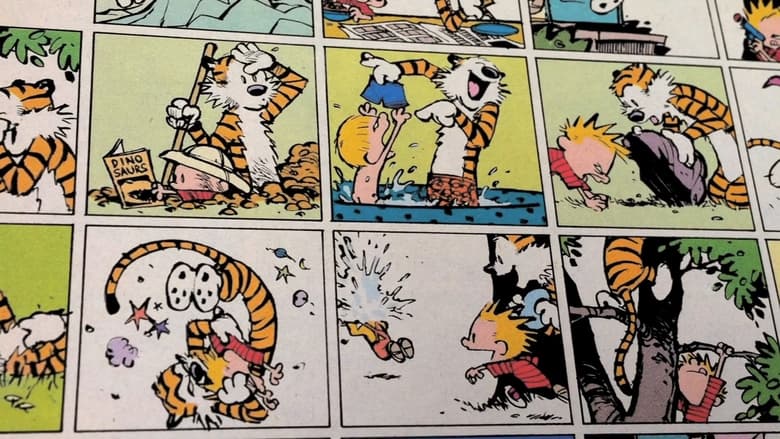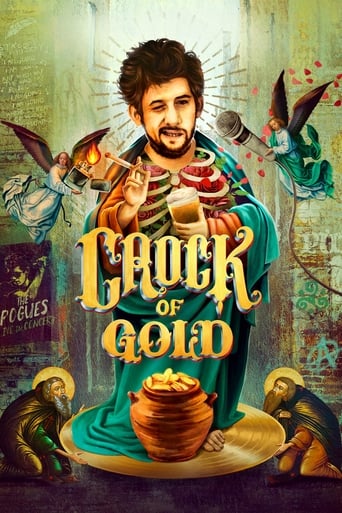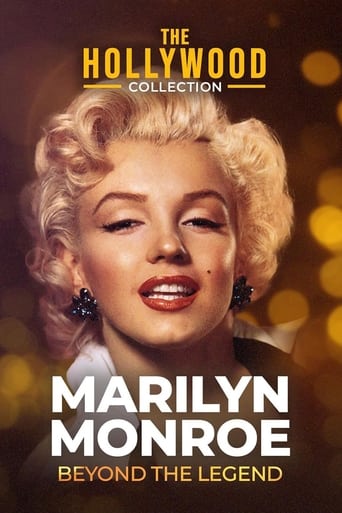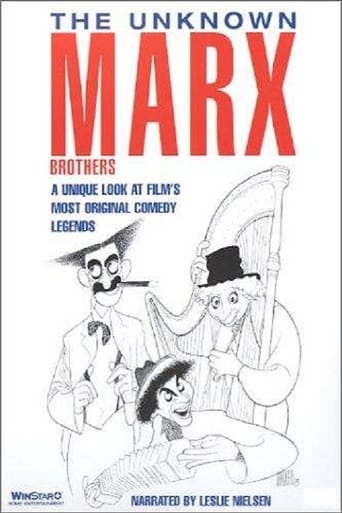Dear Mr. Watterson (2013)
20 years after Calvin and Hobbes stopped appearing in daily newspapers, filmmaker Joel Allen Schroeder has set out to explore the reasons behind the comic strip's loyal and devoted following.
Watch Trailer
Cast
Similar titles
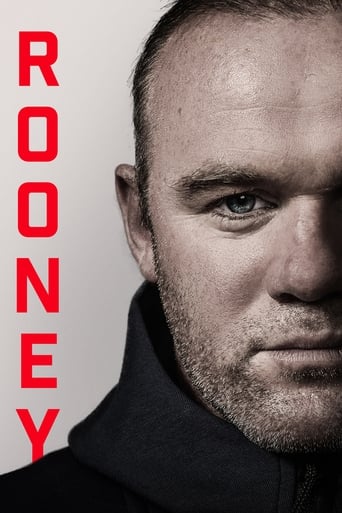
Reviews
Better Late Then Never
I like movies that are aware of what they are selling... without [any] greater aspirations than to make people laugh and that's it.
This story has more twists and turns than a second-rate soap opera.
Worth seeing just to witness how winsome it is.
A documentary film about the impact of the newspaper comic strip Calvin & Hobbes, created by Bill Watterson.First and foremost, it is important to stress that Bill Watterson is not in this documentary and the film is really not about Watterson himself. Instead, this is about the impact and life of its own that the strip took on -- Calvin and Hobbes are larger than life characters that transcend Watterson.The cornerstone of this documentary is the trip to the Cleveland suburb of Chagrin Falls. We see the scenery and the mascot being the Tigers is no coincidence. The old drawings and photos in the basement are fascinating, and any die-hard fan of Watterson would have to visit this town.What is most great is the praise from Bill Amend and Stephen Pastis, who made what could be called the only two great post-Calvin comic strips, "Fox Trot" and "Pearls Before Swine".
Greetings again from the darkness. Two upfront admissions: First, I am not a comic strip historian. Second, there have been a hand full of comic strips that I have been obsessively "drawn" to, and Calvin and Hobbes was definitely one of them. Any fan of C&H would not miss the chance to see a documentary that might provide some insight into the genius behind the imaginative boy and his feline friend. Bill Watterson is now as famous for his life as an extreme recluse as he is for his artistry on the little boy and his feline friend.Directed by uber fan Joel Allen Schroeder, we are presented with a steady stream of talking heads interrupted periodically by Schroeder's trips to the Cartoon Museum, Ohio State University library, and Chagrin Falls, Ohio (Watterson's hometown and the foundation of the Calvin and Hobbes world). Many of the talking heads are other cartoonists who remain in awe of Watterson's works. We get a glimpse into the business side as we hear from an executive at Universal Press Syndicate, Watterson's publisher. There is also a segment with Jean Schulz, the widow of Charles "Sparky" Schulz, the man behind "Peanuts".Since we see so little of the actual published work, we lean heavily on the spoken words of those interviewed ... kind of frustrating when the subject is a medium of such visual relevance. Even more frustrating is the lack of insight into Watterson as an artist. Instead, the director rehashes what we already know from following the work. Watterson's "high art vs. low art" arguments are mentioned as is his belief that imagination and creativity are crucial to the good life.By far the most interesting commentary comes from Stephan Pastis, known for his "Pearls Before Swine". Pastis not only admires Watterson's legacy but he provides insight into the world of artists who are constantly under the pressure of commercialism, and often find themselves doing business with those they have little in common with. He explains Watterson's vision and integrity in denying licensing rights to Calvin and Hobbes. Leaving hundreds of millions of dollars on the table by refusing to allow Calvin and Hobbes lunch boxes, t-shirts, stuffed animals, etc ... clearly shows that Watterson's vision was not about revenue, but rather about artistic integrity. The comparison to Snoopy selling insurance make the point quite directly.So we walk away with no more insight into Watterson, no more insight into Calvin and Hobbes, but a clear understanding of the industry respect that the work carries. We all share the pure joy of reading and re-reading our favorite panels and not just the smiles they bring, but also the multiple layers of observation delivered by a boy and his tiger. It's reminder to keep your imagination active and never miss a chance to go exploring!
I discovered the Calvin and Hobbes comics around fourth grade, and by fifth grade, I owned every compilation book of the classic strip you could buy. I used to lug them to school, one of two at a time, and anxiously await silent reading time. While the other kids were perusing the often dull, airless endeavors that was children's fiction, I felt superior turning the bright, colorful pages of Calvin and Hobbes. One of the many reasons the strip registered with me was that each page housed an adventure you, yourself, felt like you were embarking on. I credit it and Jeff Smith's graphic novel Bone for getting me through elementary school. Joel Allen Schroeder's Dear Mr. Watterson is an adventure all its own. A love-letter, a token of appreciation, a showcase, and a necessary film for the iconic comic strip that has gone on to live in a life confined to the pages of a book and old newspaper rather than all thinkable merchandize on cluttered store shelves. From the beginning of the film, it is recognized that Calvin and Hobbes is significant for many reasons but one is that writer and illustrator Bill Watterson has refused to license the material for fear of cheapening the name and the image.This is an unheard of move where in the same world we have enough Garfield and Peanuts products to make your head spin. Look at those two popular strips and compare them to Calvin and Hobbes. The only difference is that the aforementioned comic strips have gone on to take other forms of life, from t-shirts, to toys, to advertising figures for different products, while the latter has stayed true to itself since the beginning. You've never seen it on anything besides book/newspaper pages and that's how it will hopefully stay.For those unaware (there are some but very, very few, I presume), Calvin and Hobbes was a comic strip that ran for several years about an imaginative young boy named Calvin and his stuffed tiger named Hobbes and all the adventures they'd go on as a duo. They were inseparable, mainly because the comic portrayed Calvin as an odd young boy who was just going to be odd and not care what anyone thought about him. Hobbes, his loyal companion through it all, seemed to be the only one who "got" Calvin, and as a young boy, that's the best thing you could ask for.Schroeder has an adventure of his own in this film. He travels to Chagrin Falls, Ohio, the hometown of the strip's creator Bill Watterson, to try and develop and understanding of the man's motivations for creating the comic. We see Chagrin Falls of a place that time hasn't seemed to affect, as the town's appearance, architecture, and development looks as if it has remained unchanged since its inception. Schroeder evens finds himself as the library, paging through the enormous collections of newspapers dating back to 1977, where Bill Watterson's earliest illustrations can be found.The first half devotes itself to reminding us of the beauty and simplicity of the comic strip, while the second half tells us about Watterson's reclusiveness, the idea of licensing a product's name, and the future of comics as we know them. One of the best pieces of insight comes from a man named Stephen Pastis, who states that licensing effectively cheapens material that had the impact to utilize licensing in the first place. He explains how it's as if you become really close to a cousin and then, after years of a bond, he says something like, "oh yeah, I sell life insurance" (referencing MetLife's advertising campaign that utilized the Peanuts character). He continues by theorizing that Watterson's refusal to license stems from the idea of keeping control of one's original product. Film is a collaborative effort, as is an album, a book, and many other forms of media. A comic strip is your own personal thoughts, ideas, stories, and images captured on a piece of paper, and as soon as you give that simplicity up to cheap knick-knacks you lose all forms of control with the product and what's left is a once-respected product now overblown. Watterson's bold decision of not licensing the strip, without a doubt costing him millions of dollars in revenue, is definitely one of the reasons of the strip's long term success in an age where comics are overlooked and undervalued.Schroeder shows us a typical Sunday paper, where the comics are a challenge to find, usually tampered or edited for space, printed and color-aligned poorly, and, above all, uninspired. The spacial limitations and poor treatment of comics in Sunday newspapers today holds back and greatly limits potential Bill Watterson's of the digital age, and nobody seems to really care.The fact that Watterson has made the admirable decision of sacrificing temporary profits for lasting artistic purity and maintained a reclusive figure for much of his life is unfathomable in the world we inhabit today. However, take a look at what he inspired. The Calvin and Hobbes comic speaks for itself in an unconventional way, utilizing the characters, events, and situations in life children can relate to and an imaginative quality that doesn't disintegrate when one becomes older. Dear Mr. Watterson beautifully shows the impact and legacy the strip has come to behold, and articulates wholesomeness and innocence the beautiful way the strip itself did.Directed by: Joel Allen Schroeder.
Dear Mr. Watterson uses dozens of interviews and on-site investigation to tell the story of cartoonist Bill Watterson, creator of Calvin & Hobbes. For a decade, the comic strip captured the hearts and minds of readers around the world. In the process, Watterson's personal vision for the medium raised the bar for artists everywhere, changing expectations and business practices along the way.The first quarter of the film is a bit slow, but the quality and range of interviews the director lined up (thanks to financial support from two Kickstarter campaigns) more than makes up for the initial pacing. There is a mix of Watterson's peers and fans, although perhaps not enough of the latter to balance out his professional impact with the cultural one. There are a wealth of Calvin & Hobbes artifacts collected and discussed in this documentary, however, including many that trigger personal memories of growing up reading the strip on Sundays. The soundtrack by We Were Pirates is playful and appropriately reflective of the story of Watterson's work on Calvin & Hobbes.Dear Mr. Watterson is an important film for anyone interested in the comic industry or creative control in the face of commercialism. It is difficult not to root for Watterson's appearance as the interviews mount.

